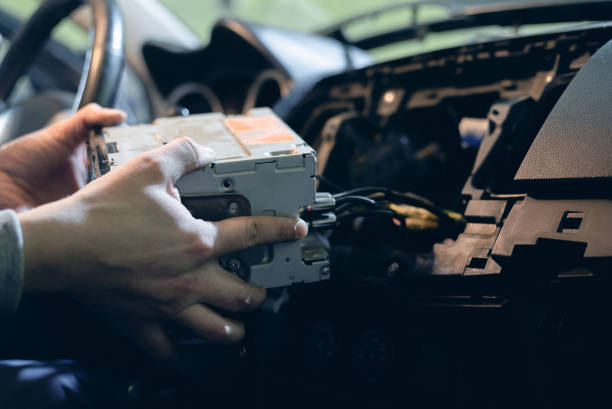ECU Remapping on Your Car has become increasingly popular among car enthusiasts looking to maximize the potential of their vehicles. One of the most effective methods of tuning is ECU remapping. This article explores what ECU remapping is, its benefits and drawbacks, and how it can significantly impact your car’s performance.
Understanding ECU Remapping

What is ECU Remapping?
The Engine Control Unit (ECU) is a computer that manages the engine’s functions, including fuel injection, ignition timing, and boost pressure (in turbocharged vehicles). ECU remapping involves altering the factory settings of the ECU to optimize performance parameters.
How Does ECU Remapping Work?
ECU remapping is achieved by rewriting the software that controls the engine. Tuners access the ECU’s data through a diagnostic port and use specialized software to modify various parameters. These changes can improve horsepower, torque, and fuel efficiency, among other factors.
The Benefits of ECU Remapping
1. Increased Power and Torque
One of the primary reasons car owners choose ECU remapping is the significant boost in power and torque. By optimizing the engine’s settings, remapping can unlock hidden potential, providing a more exhilarating driving experience.
2. Improved Fuel Efficiency
Contrary to popular belief, ECU remapping can lead to better fuel efficiency. By adjusting the fuel-to-air ratio and optimizing ignition timing, remapping can help the engine run more efficiently, reducing fuel consumption without sacrificing performance.
3. Enhanced Throttle Response
ECU remapping can improve throttle response, making your car feel more responsive and agile. A more sensitive throttle allows for better acceleration and overall driving dynamics, enhancing the driving experience.
4. Customization for Specific Needs
Every driver has unique preferences. ECU remapping allows for customization based on individual driving styles and requirements. Whether you want a more aggressive performance for track days or a smoother ride for daily commuting, remapping can cater to your needs.
5. Compatibility with Modifications
If you’ve made modifications to your car, such as installing a high-performance exhaust or a cold air intake, ECU remapping ensures that your engine operates efficiently with these upgrades. This can maximize the benefits of the modifications, leading to improved performance.
The Drawbacks of ECU Remapping
1. Warranty Concerns
One significant drawback of ECU remapping is that it may void your car’s warranty. Many manufacturers consider remapping a modification that can lead to engine damage, and as a result, they may refuse to cover repairs under warranty.
2. Potential for Engine Damage
If not done correctly, ECU remapping can lead to engine damage. Poorly executed remapping may cause the engine to run lean or rich, leading to excessive wear, overheating, or even catastrophic failure. It’s essential to have remapping done by a reputable professional with experience.
3. Legal Implications
In some regions, ECU remapping can lead to legal issues. Modifying emissions-related settings may make your vehicle non-compliant with local regulations, potentially resulting in fines or failed inspections. Always check local laws before proceeding with remapping.
4. Dependence on Fuel Quality
Remapping often requires high-quality fuel to achieve the desired results. If you regularly use lower-grade fuel, it may not support the performance enhancements intended by the remap, leading to subpar performance and potential engine issues.
The ECU Remapping Process
1. Assessment and Diagnostics
Before remapping, a thorough assessment of your vehicle is conducted. This includes diagnostic checks to identify any existing issues and to ensure the car is in good condition for tuning.
2. Data Collection
The next step involves collecting data from the ECU. Tuners use specialized tools to read the current settings and parameters stored in the ECU. This data provides a baseline for the remapping process.
3. Custom Mapping
Using advanced software, tuners modify the ECU’s parameters based on the desired performance goals. This may involve adjusting fuel maps, ignition timing, and boost levels to achieve optimal performance.
4. Testing and Fine-Tuning
After the initial remapping, extensive testing is performed to ensure the car operates smoothly and efficiently. Fine-tuning may be necessary to address any issues and to maximize performance gains.
5. Final Checks
Once the remapping process is complete, a final inspection and diagnostics are conducted to confirm that everything is functioning correctly. The driver is also informed about the changes made and how they impact the car’s performance.
Choosing the Right ECU Remapping Service

1. Reputation and Experience
When selecting an ECU remapping service, consider their reputation and experience in the industry. Look for reviews, testimonials, and examples of their previous work to ensure you choose a reliable provider.
2. Professional Equipment
Ensure that the service uses professional-grade equipment and software. High-quality tools are essential for accurate diagnostics and effective remapping.
3. Customization Options
Choose a service that offers customization based on your specific needs and preferences. A one-size-fits-all approach may not deliver the best results for your vehicle.
4. Warranty and Support
Inquire about any warranties or guarantees offered by the service. A reputable provider should stand behind their work and offer support if issues arise post-remapping.
Conclusion
ECU remapping is a powerful tool for enhancing your car’s performance. While it offers numerous benefits, including increased power, improved fuel efficiency, and better throttle response, it is essential to consider the potential drawbacks and risks. By choosing a reputable service and ensuring proper execution, you can unlock your vehicle’s full potential and enjoy a more exhilarating driving experience. Whether you’re a casual driver or a dedicated enthusiast, ECU remapping can significantly enhance your automotive journey.
